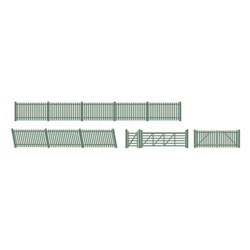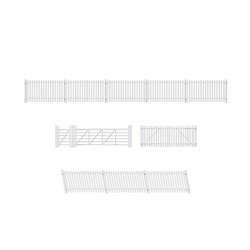Static grass puffer bottles work by manually charging model grass fibres with static electricity. When the charged...
No products
Product successfully added to your shopping cart
There are 0 items in your cart. There is 1 item in your cart.
Search Tips
How can I best model a fence to run over uneven ground?
To best model a fence to run over uneven ground on a model railway, a modeller will need to consider the terrain and the fence design.
There is a wide selection of readily available fencing options for modellers to choose from. Although highly detailed and realistic in appearance, most fencing kits or sections are designed to be used on even ground and so are not a viable option for undulating terrain. That said, there are some manufacturers such as Peco and Ratio Models who provide flexible fencing that can be adapted to the uneven landscape. As such these can be more readily integrated into an undulating landscape.
One particular approach might be to create individual sections of fencing that can be bent and shaped to fit the uneven ground. Another possibility is to completely build the fence from scratch. Both of these homemade options are entirely possible using a range of readily available scratch-build materials including metal pins, wood, wire or thread. The metal pins or small lengths of wood can be secured in place as the fence post with wire or thread and then daisy-chained along the length of the fencing. Many fences in rural locations such as field boundaries are made from locally sourced materials. Scratch-building techniques can lend themselves well to mimicking the more random and haphazard nature of these fences.
It is important to consider the height of the fence and the spacing between the fence posts to ensure that it is realistic and visually appealing. Referencing real-life examples of fences either directly or via the internet can help a modeller to get a sense of the appropriate proportions and overall design and how this has been adapted to a more challenging environment.
Overall, modelling a fence to run over uneven ground requires careful planning and attention to detail. By taking the time to consider the terrain and the design of the fence, it is possible for a modeller to create a realistic and visually striking feature on their layout.
Click here to receive the tips weekly in your mailbox. You can unsubscribe at any time.










